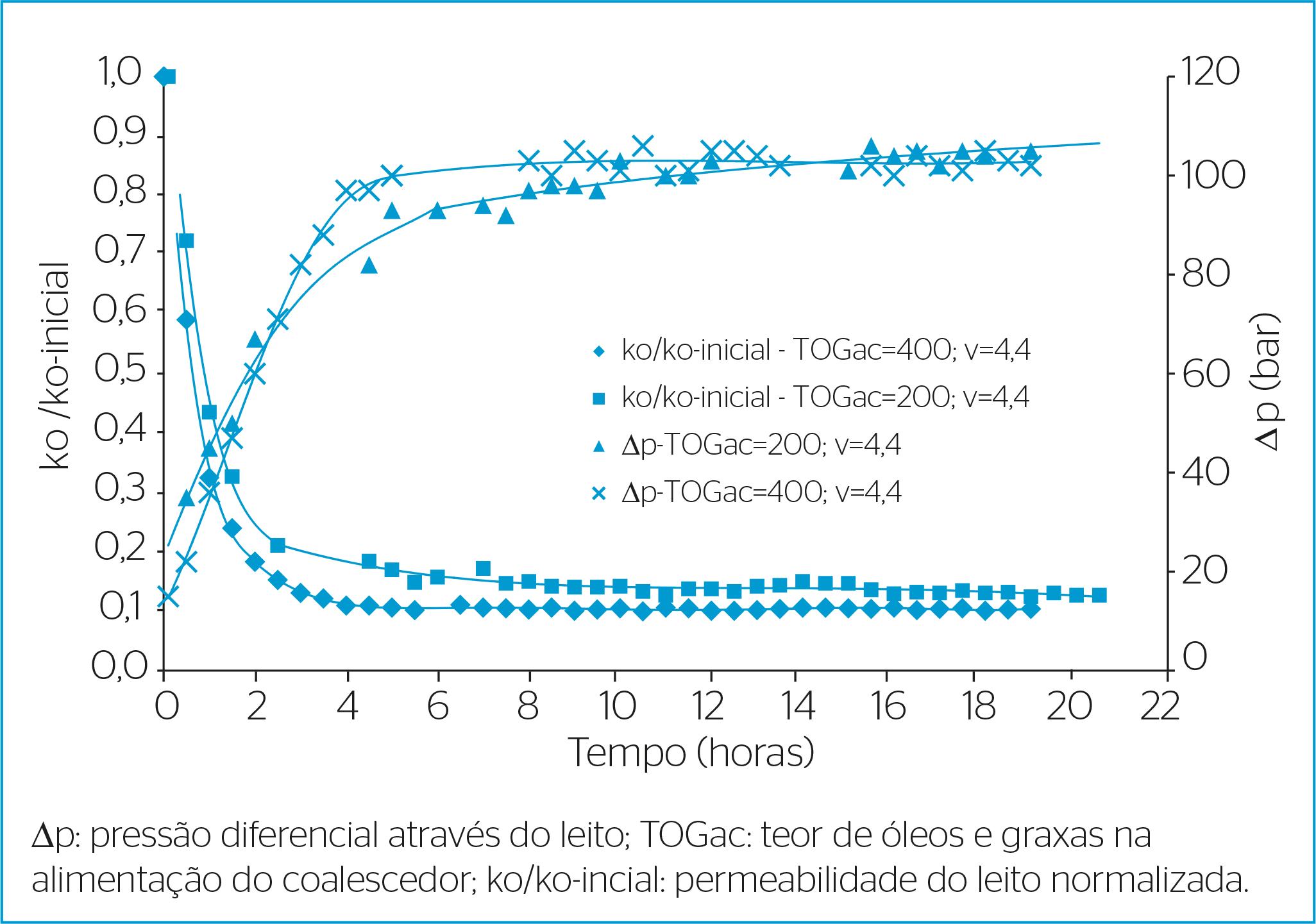The wastewater treatment with a bed coalescer consists of inducing the increase of oil droplets by passing the emulsion through a porous bed, so they can flote by gravitational separation process. The objective of this paper is to present technical and experimental considerations on the use of a granular bed coalescer, with a bed made of cationic exchange resins, for pre-treatment of emulsified oil from oily wastewater. Tests were conducted on a bench scale unit, which was fed with oil in water emulsion with oil and grease concentration (O & G) between 200 and 400 mg.L-1 and oil droplet diameter between 3 and 8 μm. The fluid velocities (v) tested were between 4.4 and 17.4 m.h-1. The coalescer bed height was fixed at 5 cm. The parameters used for assessing the tests efficiency were oil removal efficiency percentage (%E), differential pressure across the bed and, bed permeability. Results showed that the process operates in a steady-state condition and that the influent O&G affected the process efficiency, as well as the fluid velocities which reduced the efficiency significantly, with its increasing. The %E values obtained were between 50 and 20-30% to v between 4.4 and 17.4 m.h-1, respectively.
oil; emulsion; coalescence; porous bed






